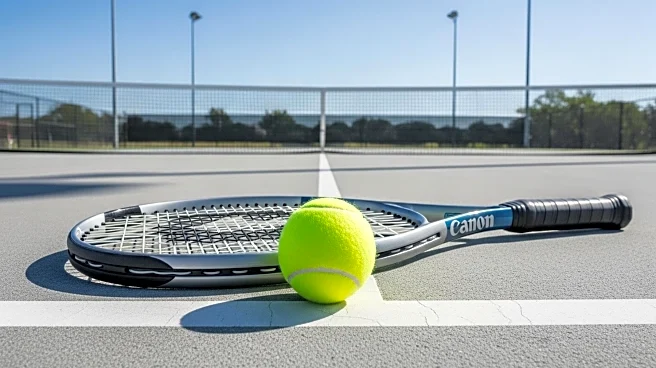What's Happening?
The US Open has sparked discussions about the fitness levels of tennis players, with sports scientist Dr. Mark Kovacs asserting that tennis players are among the fittest athletes globally. Kovacs, who has worked with various sports teams, emphasizes the unique physical and mental demands of tennis, which require players to excel in multiple areas such as VO2 max, agility, and endurance. Tennis matches involve short sprints and require players to maintain high levels of physical and mental stamina over extended periods. Kovacs highlights the contrasting styles of top players like Carlos Alcaraz and Jannik Sinner, who demonstrate exceptional speed, power, and stability. The rigorous travel schedule and long season further add to the challenges faced by tennis players, making it one of the most demanding sports.
Why It's Important?
The assertion that tennis players are among the fittest athletes underscores the sport's demanding nature, which combines physical, mental, and tactical skills. This recognition may influence training methods and athlete management across sports, highlighting the need for comprehensive fitness regimes. The discussion also brings attention to the challenges faced by tennis players, such as extensive travel and long seasons, which can impact their performance and career longevity. Understanding these demands can lead to better support systems for athletes, potentially improving their health and performance. The insights from Kovacs may also inspire other sports to adopt similar training and recovery strategies to enhance athlete fitness and resilience.
What's Next?
As the US Open continues, the focus on tennis players' fitness may lead to further research and discussions on optimizing training and recovery methods. Sports organizations might explore ways to mitigate the challenges posed by long seasons and extensive travel, potentially leading to changes in tournament scheduling or athlete support systems. The recognition of tennis players' fitness could also influence sponsorship and marketing strategies, highlighting the sport's appeal and the athletes' dedication. Additionally, the insights from Kovacs may encourage cross-sport collaborations to share best practices in athlete training and management.
Beyond the Headlines
The emphasis on tennis players' fitness highlights broader issues in sports, such as the balance between physical demands and athlete well-being. The discussion may prompt ethical considerations regarding athlete management, including the impact of rigorous schedules on mental health. The recognition of tennis players' fitness could also influence cultural perceptions of the sport, potentially increasing its popularity and inspiring more people to engage in tennis. The insights from Kovacs may lead to long-term shifts in how sports are viewed and managed, prioritizing athlete health and performance.













